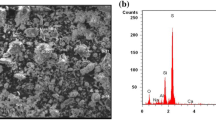Abstract
The pyrometallurgical processing of nonferrous minerals found in association with sulfur and arsenic generates arsenic-bearing SO2 gases. Effective process gas cleaning presents technical problems due to the high volatility of the As2O3 compound and the elevated dew point of the sulfur-trioxidecontaining SO2 gas. Critical factors for gascleaning technology selection pertaining to technical feasibility, economic acceptability, and environmental compatibility are the arsenic-to-sulfur ratio in the feed material, the operating parameters of the pyrometallurgical and gas cooling process, the admissible arsenic concentration of the SO2 gas after arsenic elimination, and the most suitable form of the arsenic-bearing output material. Depending on these factors, the bulk of the arsenic can be eliminated from the process gas in concentrated form according to either the dry or wet method, after which final arsenic removal from the process gas to below the required admissible level must take place in a wet electrostatic precipitator.
Similar content being viewed by others
References
P.J. Weisenberg and P.S. Bakshi, “Arsenic Distribution and Control in Copper Smelters,” JOM, 31 (10) (1979), pp. 38–44.
“Arsenic Emissions from Primary Copper Smelters,” Background Information for Proposed Standards (Washington, D.C.: EPA, February 1981).
V.L. Escobar Gonzales and A.J. Monhemius, “The Mineralogy of Arsenates Relating to Arsenic Impurity Control,” Arsenic Metallurgy Fundamentals and Applications, ed. R.G. Reddy et al. (Warrendale, PA: TMS, 1988), pp. 405–453.
N.L. Piret and A.E. Melin, “An Engineering Approach to the Arsenic Problem in the Extraction of Non-Ferrous Metals,” Productivity and Technology in the Metallurgical Industries, ed. M. Koch and J.C. Taylor (Warrendale, PA: TMS, 1989), pp. 735–814.
Federal Register—Identification and Listing of Hazardous Waste, Book 2, 45 (98) (Washington, D.C.: EPA, 1980), 33084.135.
DIN 38 414–54, Schlämme und Sedimente (Gruppe S4), Bestimmung der Eluierbarkeit mit Wasser, (S4) (October 1984).
“Arseneinbindung als Arsenat,” Metallgeselschaft AG, German Patent 4 122 894 (November 1991).
N.L. Piret and K. Spitz, “Metallurgical Aspects of Solid Waste Generation and Minimization in Copper Smelting,” Extraction and Processing for the Treatment and Minimization of Wastes, ed. J.P. Hager et al. (Warrendale, PA: TMS, 1994), pp. 843–872.
T.K. Corwin and T.W. Dewitt, “Boliden Sulfide Precipitation Process,” International Technology for the Non-Ferrous Smelting Industry (1982), pp. 111–114.
G. Klamp and D. Wanner, “Removal of Arsenic from Washing Acid by the Sachtleben-Lurgi Process,” Residues and Effluents-Processing and Environmental Consideration, ed. R.G. Reddy et al. (Warrendale, PA: TMS, 1991), pp. 823–837.
K. Tozawa, T. Nishimura, and Y. Umetsu, “Removal of Arsenic from Aqueous Solutions,” Metallurgical Review of MMIJ, 1 (1) (March 1984), pp. 76–87.
Author information
Authors and Affiliations
Additional information
For more information, contact F. Dalewski, Lurgi Bischoff GmbH, Ruhrallee 311, 46136 Essen, Germany; telephone 49-69-5808-1141; fax 49-69-5808-2763; e-mail frank_dalewski@lurgi.de.
Rights and permissions
About this article
Cite this article
Dalewski, F. Removing arsenic from copper smelter gases. JOM 51, 24–26 (1999). https://doi.org/10.1007/s11837-999-0153-0
Issue Date:
DOI: https://doi.org/10.1007/s11837-999-0153-0




